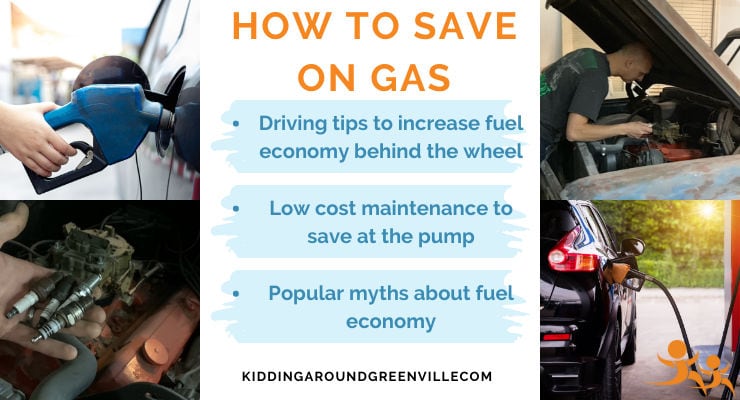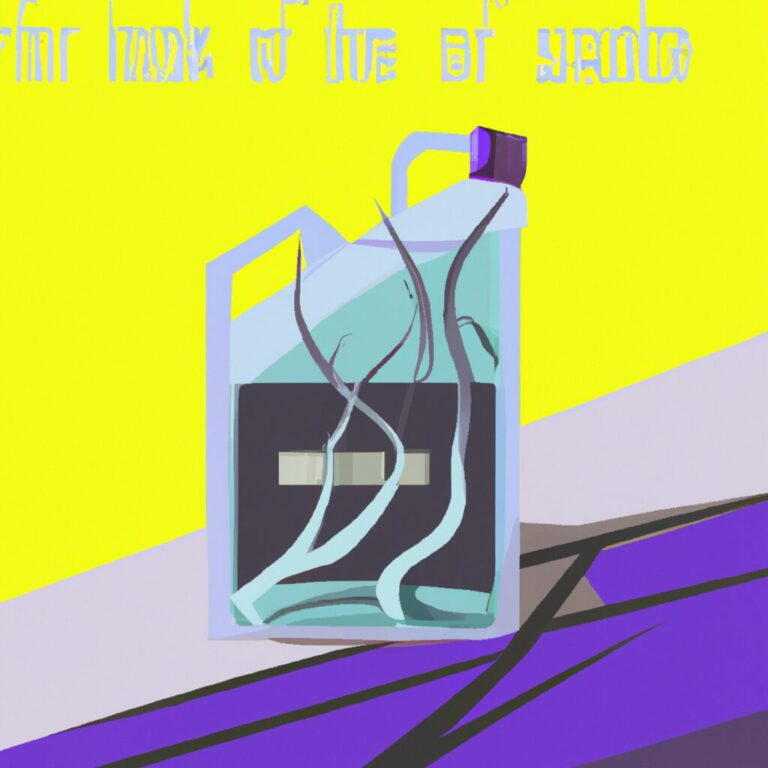How to Save Gas When Low
To save gas when low, reduce unnecessary idling and maintain proper tire pressure. Lower idling time and maintaining tire pressure can help save fuel efficiently.
Increasing fuel efficiency has become a top priority for many drivers due to rising gas prices and environmental concerns. When facing low gas levels, it is crucial to adopt effective strategies for saving fuel. By minimizing idling time and ensuring proper tire pressure, drivers can make significant strides in conserving gas.
This article explores practical tips and techniques to help individuals optimize their fuel usage and reduce the frequency of refueling. Understanding these simple yet effective methods can not only help save money but also contribute to a greener and more sustainable environment. Let’s delve into the details of how these strategies can be implemented to enhance fuel efficiency when gas is running low.

Credit: www.folsomautomall.com
Smart Driving Habits
Smart driving habits play a crucial role in saving gas when your fuel level is running low. By adopting these habits, you can maximize fuel efficiency and make the most out of every drop of gas. Implementing small changes in your driving behavior and style can lead to significant savings, contributing not only to your wallet but also to the environment. Here are some smart driving habits that can help you save gas when you’re low:
Smooth Acceleration
Avoid rapid acceleration as it can consume more fuel. Gradually pressing the accelerator helps in maintaining a steady and optimal speed, ensuring efficient fuel usage. By accelerating smoothly, you not only conserve gas but also reduce wear and tear on your vehicle, ultimately saving money on potential repairs.
Maintaining A Steady Speed
Driving at a consistent speed helps in saving gas. When you abruptly speed up and slow down, your vehicle uses more fuel. By maintaining a steady speed, you allow your car to operate at its most fuel-efficient state, resulting in significant gas savings during your low fuel situation.

Credit: kiddingaroundgreenville.com
Vehicle Maintenance
Proper vehicle maintenance is essential for improving fuel efficiency and saving gas when low. Regular maintenance not only extends the life of your vehicle but also ensures that it runs smoothly and efficiently. By adhering to simple maintenance practices, you can significantly decrease your fuel consumption and contribute towards a greener environment.
Proper Tire Inflation
One often overlooked maintenance task that can help save gas is checking and maintaining proper tire inflation. Underinflated tires create more rolling resistance, which forces the engine to work harder and consume more fuel. Keep your tires inflated to the recommended pressure level specified in your vehicle’s owner’s manual. Regularly inspect your tires for any signs of wear or uneven thread patterns as this can affect your vehicle’s fuel efficiency.
Regular Engine Tune-ups
Another crucial aspect of vehicle maintenance is regularly tuning up your engine. A well-maintained engine runs more efficiently and consumes less fuel. Schedule regular tune-ups with a certified mechanic to check for any issues that could be affecting your fuel economy. During a tune-up, the mechanic will inspect and replace faulty spark plugs and filters, ensuring that your engine is operating at its optimal performance. Regular engine tune-ups not only save you money on fuel but also help prevent more significant engine problems down the road.
Efficient Route Planning
To save gas when low, efficient route planning is essential. By optimizing your driving routes, you can minimize fuel consumption and maximize savings. Planning ahead and choosing the most direct paths will help you use less gas and reduce your overall fuel costs.
Avoiding Traffic Jams
One of the best ways to save gas when low is to avoid traffic jams. Not only are they frustrating, but they can also waste a significant amount of fuel. Sitting idly in traffic consumes gas unnecessarily, leading to reduced fuel efficiency. By planning your routes to avoid congested areas, you can minimize the time spent in traffic and conserve fuel.
Using Gps For Shortest Routes
Another effective way to save gas when low is to utilize a GPS device or smartphone app that can provide the shortest and most efficient routes. These navigation tools rely on real-time traffic data to determine the fastest way to reach your destination. By following these recommended routes, you can avoid unnecessary detours and reduce fuel consumption. GPS devices can also identify alternative routes in case of unforeseen traffic congestion, guiding you towards less congested roads.
In addition to providing the shortest routes, GPS devices often have features that allow you to optimize your journey for fuel efficiency. Some models can calculate the most efficient speed at which to drive, reducing the amount of gas consumed during your trip. They can also alert you to upcoming traffic conditions, enabling you to make timely decisions and reroute if necessary.
When using GPS for route planning, make sure to update the device regularly to keep the maps and traffic information up to date. This will ensure accurate and reliable navigation, reducing the risk of being redirected into heavy traffic areas. Remember to adjust your settings to prioritize fuel efficiency and consider factors such as traffic patterns, time of day, and weather conditions in your route planning.
Key takeaways:
- Avoiding traffic jams can help save gas when low by reducing idle time and unnecessary fuel consumption.
- Utilizing a GPS device or smartphone app for route planning can provide the shortest and most efficient routes.
- GPS devices often have features to optimize fuel efficiency, such as determining the most efficient driving speed and providing real-time traffic updates.
- Regularly updating your GPS device and considering factors like traffic patterns and weather conditions can further enhance fuel-saving efforts.
Reducing Aerodynamic Drag
Reducing aerodynamic drag is an effective way to save gas when driving at high speeds. By minimizing the resistance that your vehicle encounters, you can improve fuel efficiency and reduce your gas expenses. There are several simple adjustments you can make to your vehicle to achieve this, including:
Closing Windows At High Speeds
When driving on the highway, closing your windows can significantly reduce aerodynamic drag. Open windows create additional air resistance, causing your vehicle to work harder and burn more fuel. By keeping the windows closed, you can streamline the airflow around your car and improve your gas mileage.
Removing Roof Racks
Roof racks are convenient for carrying cargo, but they also increase aerodynamic drag. Removing roof racks when they are not in use can enhance the aerodynamics of your vehicle and help it move more efficiently through the air, ultimately saving gas.
Alternative Transportation Options
Carpooling
Carpooling is a cost-effective and eco-friendly way to save gas by sharing rides with others.
Using Public Transportation
Public transportation such as buses and trains can help you save on gas expenses and reduce carbon emissions.

Credit: www.reddit.com
Frequently Asked Questions For How To Save Gas When Low
How Do You Save Gas When Almost Empty?
When almost empty, driving at a steady pace and reducing speed can save gas. Avoid quick accelerations and brake gently. Close windows and reduce A/C use. Remove excess weight from the car to improve gas mileage.
How Do You Save Gas When Your Gas Light Is On?
To save gas when your gas light is on, drive smoothly, avoid sudden acceleration or braking, and maintain a steady speed. Also, remove any unnecessary weight from your vehicle, keep your tires properly inflated, and limit the use of air conditioning or heating.
What Wastes The Most Gas In A Car?
The most gas in a car is wasted by excessive idling, aggressive driving, and speeding.
Does Driving In Low Save Gas?
Driving in low gear can save gas by reducing engine strain and maintaining steady speed. This technique prevents rapid acceleration and deceleration, which consumes more fuel. By driving in low gear, you optimize fuel consumption and increase your vehicle’s efficiency.
How Can I Improve My Gas Mileage Quickly?
To improve gas mileage quickly, ensure proper tire inflation, maintain a steady speed, and avoid aggressive acceleration and braking.
What Are The Benefits Of Using Cruise Control?
Using cruise control can help maintain a consistent speed, reduce fuel consumption, and prevent unnecessary speed fluctuations for improved gas mileage.
Is It Better To Use Air Conditioning Or Roll Down Windows For Fuel Efficiency?
Using the air conditioning at higher speeds is more fuel-efficient than rolling down windows due to reduced aerodynamic drag.
Conclusion
Saving gas when low is crucial for both your budget and the environment. By implementing simple techniques like driving smoothly, proper tire maintenance, and using technology, you can significantly reduce your fuel consumption. By being mindful of your driving habits and making a few adjustments, you can make a positive impact on your wallet and the planet.

